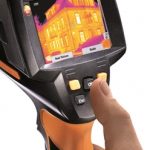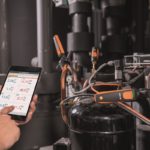From catering companies to medical suppliers, refrigeration has long had its uses across a whole host of sectors.
One area of expertise that isn’t exactly known for utilising the technology is zoological scientific research. However, thanks to studies being carried out by Bucknell University in the US and the Commonwealth Scientific and Industrial Research Organisation (CSIRO) in Australia, that could all be set to change.
On campus in Pennsylvania, researchers are looking at ways to better understand white-nose syndrome, a fungal disease which has killed over six million bats in North America alone.
Temperature controlled environment
The fungus effects bats while they hibernate and thus, the researchers have had to find a way to create their natural habitat in a controlled environment. The caves which the bats are native to are often dark, damp and – of course – cold.
Scientists have created a refrigeration chamber which has to have its temperature constantly monitored and consistently checked through the use of a digital thermometer and effective data loggers.
Back in Australia, CSIRO – the country’s national science agency – has carried out similar research which also relies heavily on creating artificial habitats that are as close to the real thing as possible.
CSIRO’s research has been looking at the potential bats have to fight human viruses.
Bats are incredibly resistant to airborne diseases that effect humans – they have found to be immune to Ebola, SARS and even lesser conditions like measles and mumps.
Better treatments for human diseases
It is believed that pathogens that they naturally harvest could be the key in finding the cure to a whole host of health issues that currently effect swathes of the world population.
“A deeper understanding of these evolutionary adaptations in bats may lead to better treatments for human diseases, and may eventually enable us to predict or perhaps even prevent outbreaks of emerging viruses,” explained Dr Chris Cowled, post-doctoral fellow at CSIRO’s Australian Animal Health Laboratory.
With over 90 species of bat native to Australia alone, the potential they hold in the pursuit for better virus treatment could be endless.
Any research such as this is incredibly reliant on the controlled environment in which it is undertaken. Utilising a product such as the testo 176 P1 can better enable anyone in the field of scientific research to keep track of a whole range of information.
Changes in pressure, temperature and humidity can all be accurately recorded, ultimately allowing for only the most ideal conditions to be created in the hunt for the perfect artificial environment.









 Reduce cooking oil costs while ensuring quality
Reduce cooking oil costs while ensuring quality Expert knowledge on CO2 monitoring
Expert knowledge on CO2 monitoring Refrigeration knowledge - in 3 modules
Refrigeration knowledge - in 3 modules



